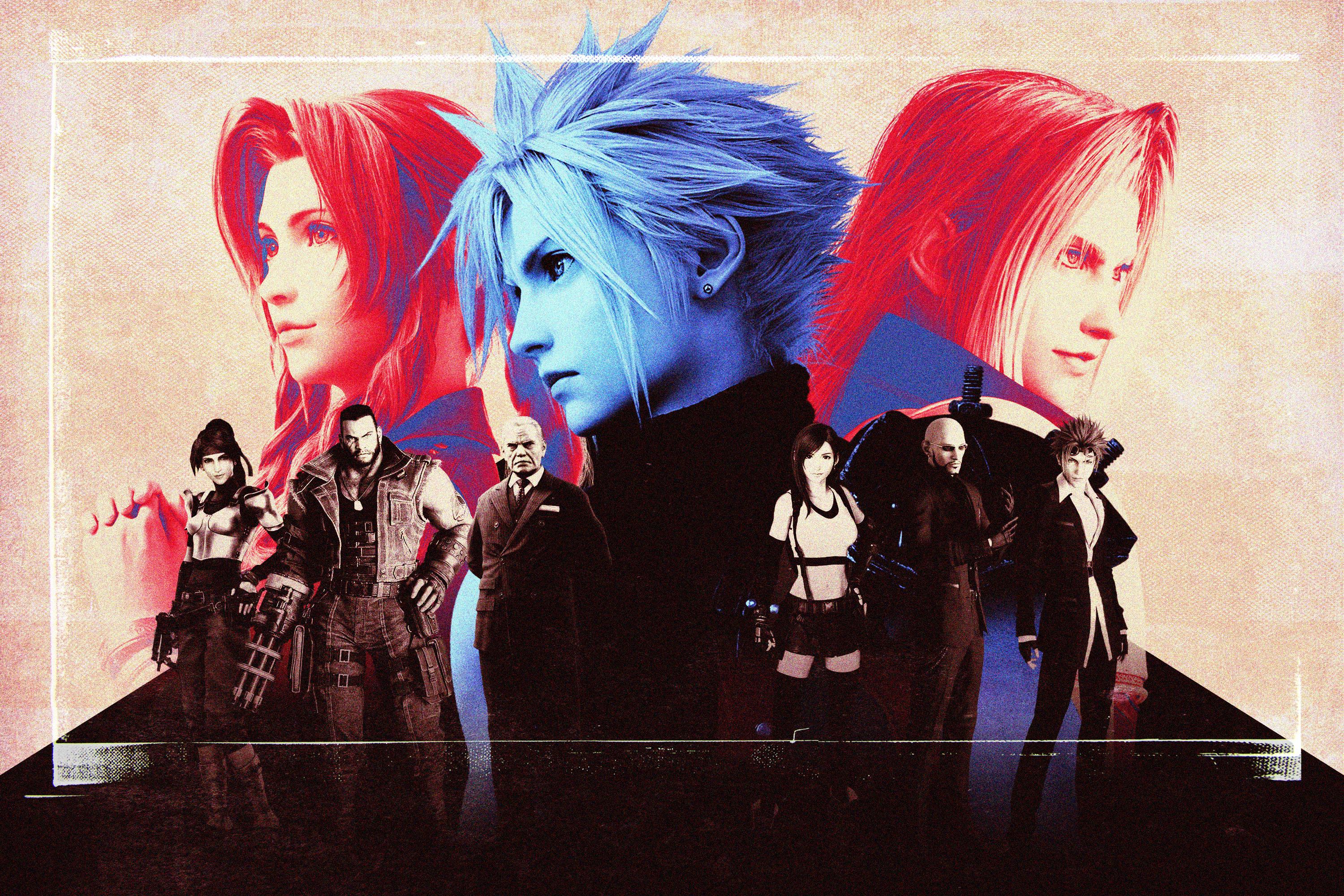‘Final Fantasy VII Remake’ Earned Its Second Chance
The long-awaited remake of the 1997 classic is a shocking escalation of the original video game’s convictions

The itinerant mercenary Cloud Strife and the local florist Aerith Gainsborough fight a vengeful, anthropomorphic house in the metropolitan Midgar slums.
In the original Final Fantasy VII, the first-gen PlayStation masterpiece released 23 years ago, Cloud and Aerith encountered the so-called Hell House as a strange but commonplace enemy in the Sector 6 slums of Midgar. In Final Fantasy VII Remake, a reboot of the original title released Friday, Cloud and Aerith encounter the Hell House in the same vicinity but in a much different context. Now the pair confront Hell House as a far more powerful enemy—a boss—in the new subplot’s preposterous climax. Cloud maintains his stiff stance as the architectural absurdity emerges stranger than ever before. “It’s just a house,” Aerith says. “That’s no ordinary house,” Cloud responds. The battle begins.
Final Fantasy VII is a very serious story about capitalism, ecoterrorism, and armageddon. Cloud and the local ecoterrorist group Avalanche bomb the city’s power reactors, fueled by mako (the planet’s lifeblood, essentially) and operated by the world’s expansionist, techno-dystopian superpower, the Shinra Electric Power Company, which once enlisted Cloud as a soldier. Cloud’s childhood friend, Tifa Lockhart, leads Avalanche alongside the gun-armed zealot, Barret Wallace, who looks down on Cloud as an aloof, amoral stranger who’s only joined these missions for the money, though Cloud also recalls his childhood promise, in simpler times, to reunite with Tifa and protect her. Despite his dickish, dispassionate style, Cloud grows a hero’s conscience in his association with Avalanche. Together, Cloud, Barret, Tifa, Aerith, and the ferocious puppy Red XIII confront Shinra while also pursuing the fanatical swordsman Sephiroth, who is on his own pilgrimage to summon a meteor to strike the planet and extinguish humanity.
It’s a lot, right? In the original game, Shinra’s tyranny, Sephiroth’s pilgrimage, and Cloud’s self-discovery formed a global, open-world adventure that spanned three disks, the first several hours spent in Midgar before the plot spills Cloud, Barret, Tifa, Aeris, and Red XIII into far-flung destinations: Red XIII’s village, Cosmo Canyon; a coastal fortress, Junon; a vacation resort, Costa del Sol; a sordid casino, Gold Saucer; and Cloud and Tifa’s cursed hometown, Nibelheim. The remake limits the adventure to its formative drama in Midgar, and although the game’s Japanese publisher Square Enix won’t yet say for sure, the remake seems designed to split the experience across a few sequels. For now, Square Enix restricts the player to the game’s most memorable setting but also the most cramped, oppressive environment in a title (and a franchise) otherwise defined by its world-conquering scale. It’s a choice that risked diluting the experience through decimation and further delays, retelling a fraction of the original story and otherwise capturing a mere fraction of the original game’s moments and moods.
But the remake relaxes into the quirkier groove, which endeared so many fans to the original title. The orchestral bombast in the earliest hours (and in the commercials) fades into jazz, trap, EDM, and vaporwave. Once the bombing missions conclude, the back-alley hijinks begin, and the remake turns out to be the wildest, most eclectic Final Fantasy title since, well, the original Final Fantasy VII. The remake preserves the game’s gallows humor in the more daunting settings, such as Shinra HQ; and better yet, remake heightens the broad comedy in the more convivial locations, such as the hedonistic Wall Market. The original game and the remake both thrive by the many offbeat stretches that soften and sentimentalize the game’s heroes, especially Cloud and Barret, the two macho fools. In the remake, Cloud doesn’t just disguise himself in a dress to rescue Tifa from the horny Wall Market boss, Don Corneo, as he auditions women to become his new wife. This time, to seal his deal with the dressmaker, Cloud dances. (He played Final Fantasy X-2, and he took notes.) How could a remake that spent 15 years in hushed, stunted development emerge with such spectacular confidence in its riskiest elements? How could Square Enix handle a substance as finicky, prohibitive, and conservative as nostalgia to produce such a faithful but radical adaptation to real-time combat mechanics and near-photorealistic performance? How did such an otherwise troublesome video game series recover so decisively from the slapdash Final Fantasy XV?
Final Fantasy VII Remake turns out to be a reboot disguised as a remake, a shocking escalation of the original game’s comedic beats and dramatic convictions. The remake doesn’t confine the player to Midgar so much as it reinvigorates the city, and it elaborates on its class warfare in order to render the slums as busy and expansive as the entirety of the original game’s world map. And, ultimately—astoundingly—Final Fantasy VII Remake spills the player into uncharted territory. The finale recalls Kingdom Hearts in its wholesome, transcendental camaraderie and Rebuild of Evangelion in its second-run subversions; suddenly, Final Fantasy VII seems bigger and more preposterous than the game—and the series—has seemed since 1997. For more than a decade, Final Fantasy VII fans wondered whether the game’s remake would ever materialize in decent shape, if at all. Now, I’ve defeated the Hell House, and I wonder how Square Enix plans to top that.

